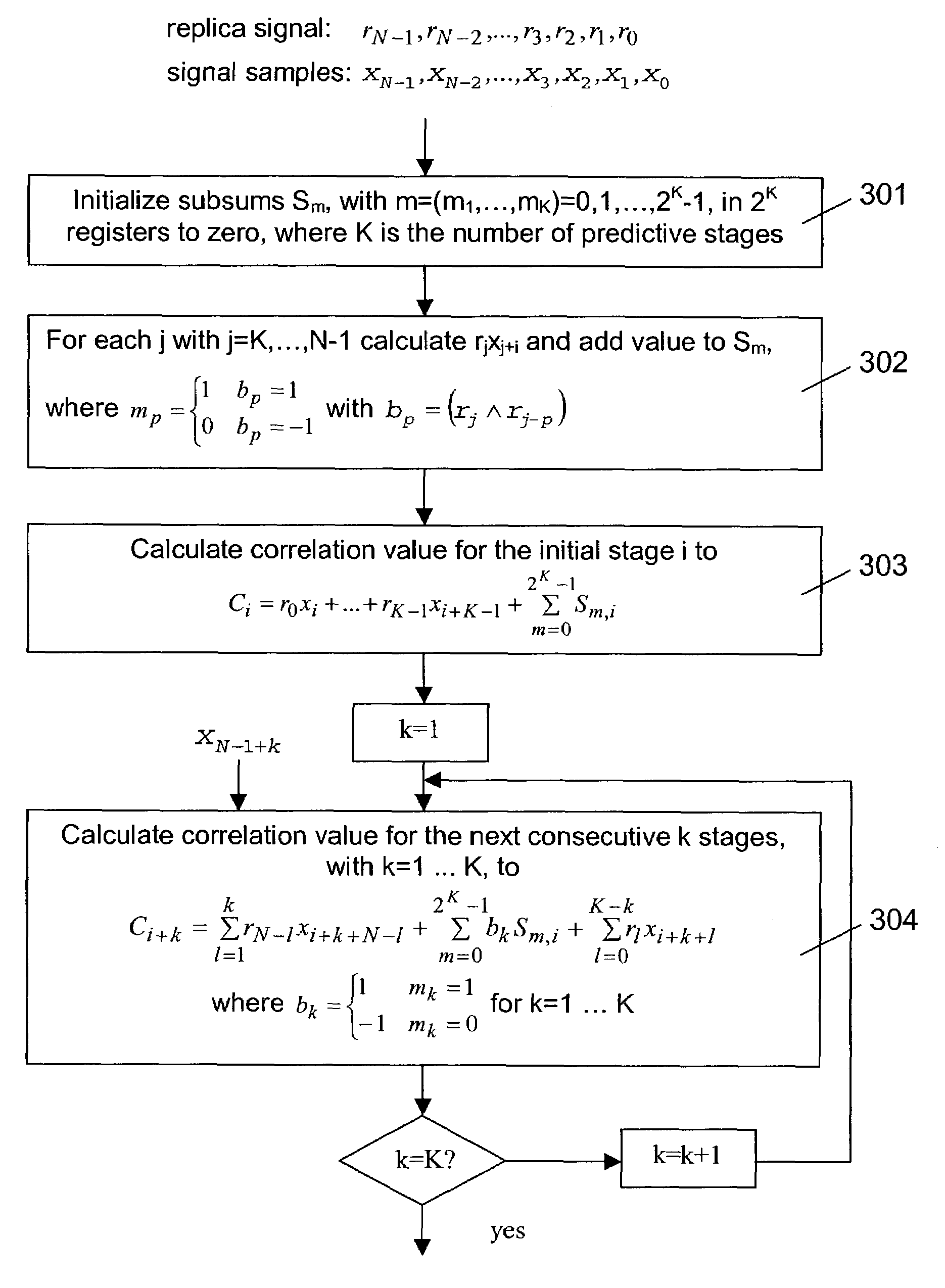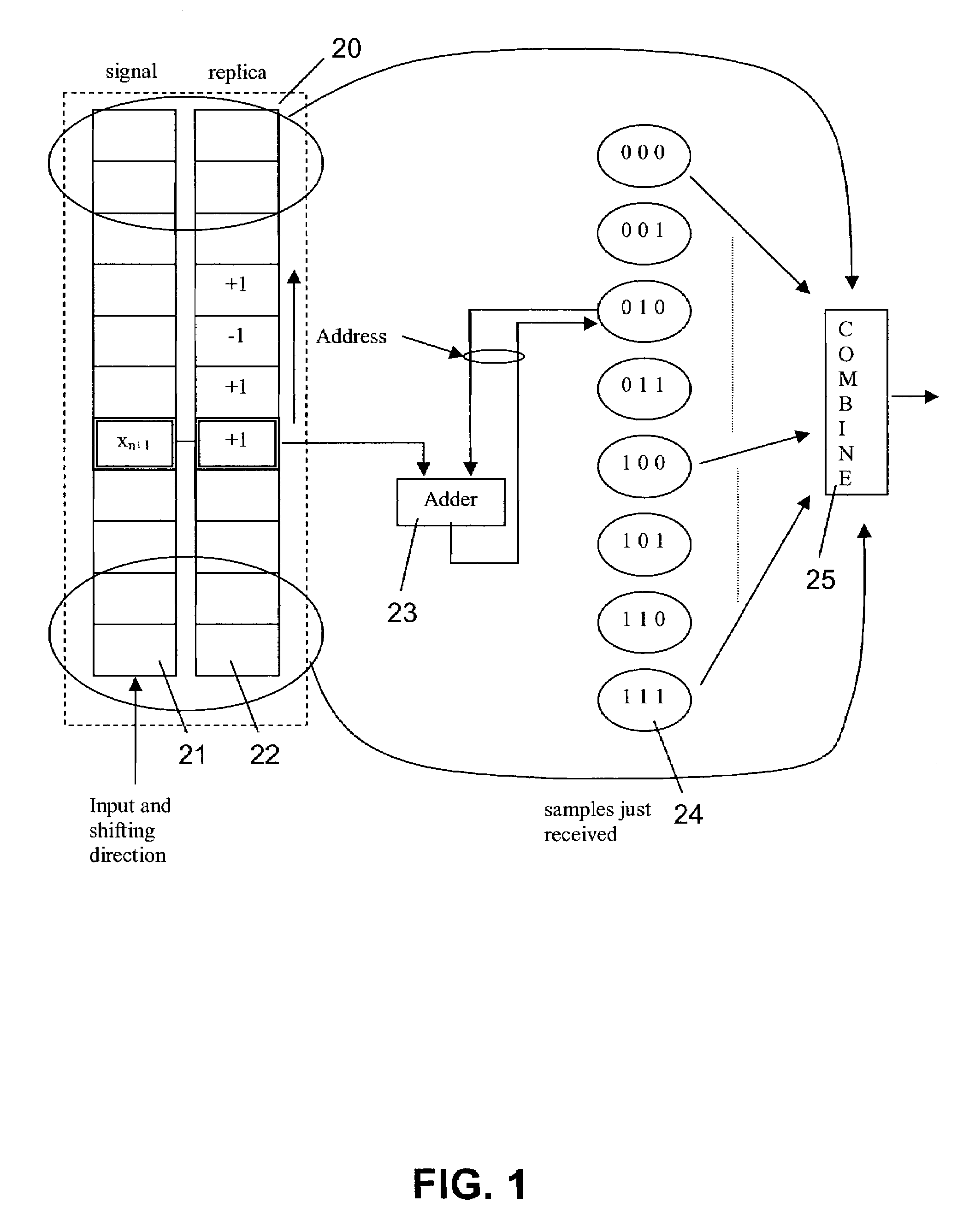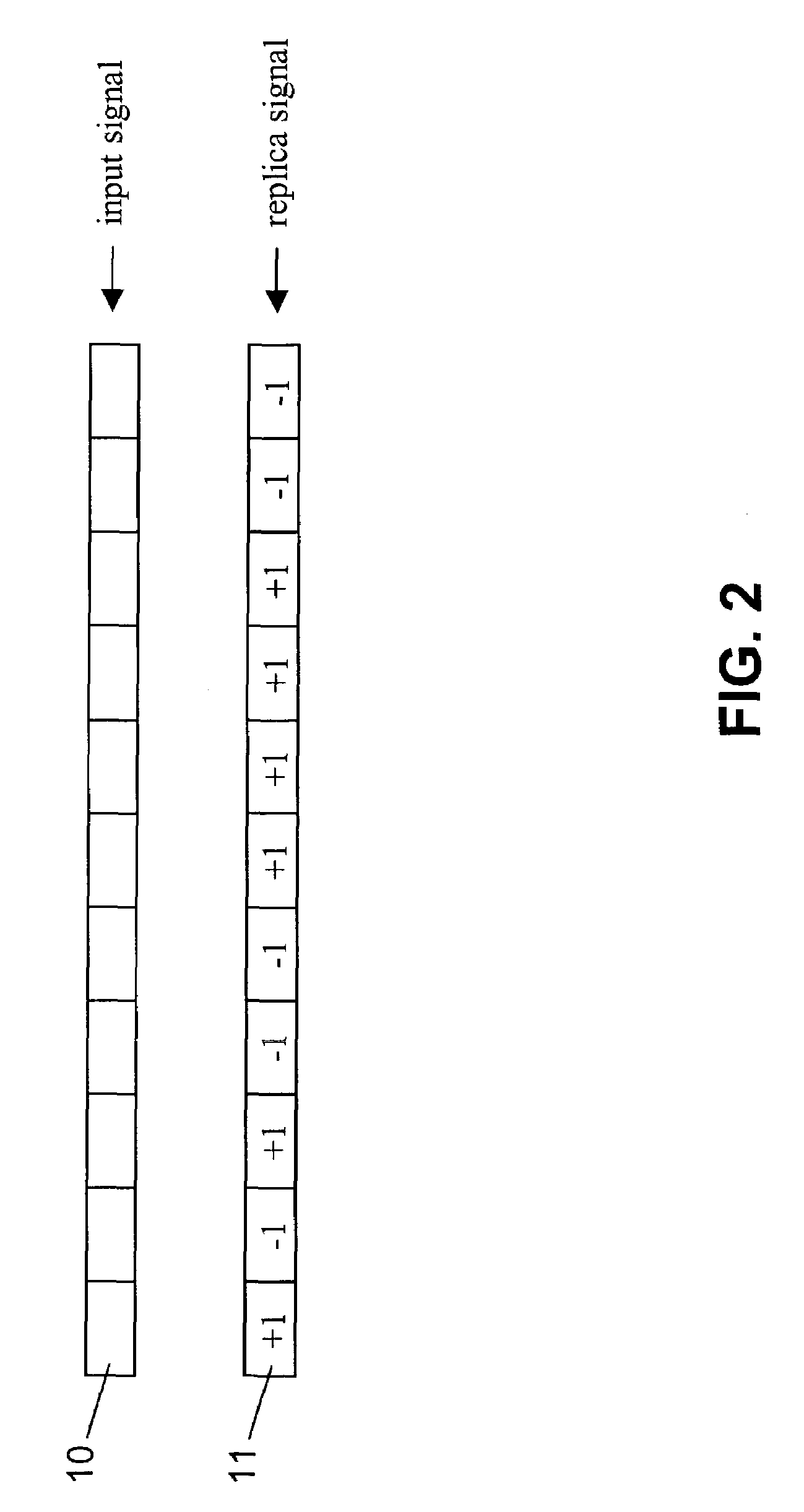Determining the correlation between received samples and available replica samples
- Summary
- Abstract
- Description
- Claims
- Application Information
AI Technical Summary
Benefits of technology
Problems solved by technology
Method used
Image
Examples
Embodiment Construction
[0033]An exemplary embodiment of the invention, which is implemented in a receiver of a GPS system, will be described with reference to FIGS. 1 to 4.
[0034]FIG. 1 illustrates schematically the structure of the receiver as far as required for the presented embodiment.
[0035]On the left hand side of FIG. 1, a memory 10 of the receiver is indicated with dashed lines. The memory comprises a first portion 11 depicted as a first vertical row and a second portion 12 depicted as second vertical row. When the receiver receives a satellite signal, the known or assumed carrier frequency is wiped off from the received signal, and a set of consecutive samples of the resulting signal is stored in the first memory portion 11 of the memory of the receiver. Moreover, the receiver stores in the memory portion 12 a replica code sequence which corresponds to the code sequence employed by a satellite of the GPS system. Alternatively, the replica code sequence could be generated in real-time. The GPS syste...
PUM
 Login to View More
Login to View More Abstract
Description
Claims
Application Information
 Login to View More
Login to View More - Generate Ideas
- Intellectual Property
- Life Sciences
- Materials
- Tech Scout
- Unparalleled Data Quality
- Higher Quality Content
- 60% Fewer Hallucinations
Browse by: Latest US Patents, China's latest patents, Technical Efficacy Thesaurus, Application Domain, Technology Topic, Popular Technical Reports.
© 2025 PatSnap. All rights reserved.Legal|Privacy policy|Modern Slavery Act Transparency Statement|Sitemap|About US| Contact US: help@patsnap.com



